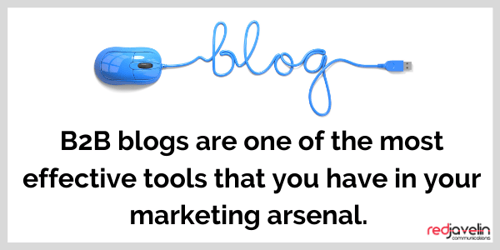 B2B marketers still generate over 70% of their leads from blogging and businesses that prioritize blogging are 13x more likely to see a positive ROI (Source: Hubspot).
B2B marketers still generate over 70% of their leads from blogging and businesses that prioritize blogging are 13x more likely to see a positive ROI (Source: Hubspot).
Blogging gives you a platform to expand upon your core messages and educate prospects, customers, investors, and partners at every stage of the buying cycle. In B2B sales, there are anywhere between 6-21 influencers in the buying cycle, each having their own motivations and buying agenda.
Well-optimized posts also lead to an increase in brand awareness and conversions. Let’s take a look at how this works.
Due to Covid-19, we had a manufacturing client lay off their entire marketing team. Three blog posts were already queued so they were published at the scheduled times. There has been no social media or email activity for the last 90 days with the exception of a few automated workflows. This account generated 170 new contacts – with no current marketing activity. Each new contact entered into a workflow automatically for nurturing and more than 70 became marketing qualified.
So, how did this happen? Over the past several years, each blog post, landing page, and premium content was optimized around topics and keywords. As people search for information, these posts and premium content pops up in searches – it’s a gift that keeps on giving.
Blogging is a long-term game. If you develop a post and expect the leads to come pouring in, you will be disappointed. It takes time for SEO to kick in.
Here are some tips to keep your blog fresh.
- Develop a multi-pronged blog strategy around 5-6 themes. What do we mean about themes? Topics should align with the business strategy, which includes vision of where the market is going, technology, product, customers, partners, the challenges your prospects face, corporate news, and any type of social responsibility programs.
- Revisit your strategy each quarter to see if it is still aligned with the business.
- Make your blog easy to find, don’t bury it. Some companies bury their blog in the Company section or in Resources. True thought leaders promote their blog on their home page as well as in their navigation bar.
- Get the technical aspects of your blog right. This includes headlines, image alt-tags, meta descriptions, keywords, linking, and topic clusters. For example, Headlines should include your keyword and be less than 70 characters. Try using free tools like this headline analyzer. It will help you develop a catchy headline that is technically correct.
- Ensure that there is a compelling call-to-action in each post.
- Promote your blog on social media
Your blog is one of the most effective tools that you have in your marketing arsenal. Well optimized blog posts that educate your target audiences will generate leads for a long time.




